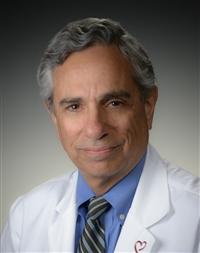Insertable monitors shown to detect atrial fibrillation more reliably than short-term strategies


That was the question a group of researchers, including Peter Kowey, MD, of Main Line Health, set out to answer. And the stakes couldn’t be higher.
Atrial fibrillation (AF) markedly increases a patient’s risk of having a catastrophic stroke. In the United States, approximately 795,000 people each year suffer a stroke, of which about 130,000 die. Those who survive are often left permanently disabled; in fact, stroke is the leading cause of serious long-term disability, according to the U.S. Centers for Disease Control and Prevention.
While there is no cure for AF, symptoms can be well managed with anticoagulant medications. But first patients have to be diagnosed. Previous studies have shown that nearly 40 percent of patients at risk for AF actually had the disorder but had not been diagnosed. So early and effective detection is crucial.
The researchers used data from the REVEAL AF study, a multicenter clinical trial in which Main Line Health participated. They reviewed clinical information from 385 trial participants who were not previously diagnosed with AF but who had risk factors for the disorder and had cardiac monitors inserted.
“Our analysis one year after cardiac-monitor insertion showed the incidence of AF of six minutes or longer was 27 percent in this patient population, which was significantly greater than the short-term continuous monitoring strategies we studied,” said Dr. Kowey, a world-renowned cardiologist at Lankenau Medical Center and the William Wikoff Smith Chair in Cardiovascular Research at Lankenau Institute for Medical Research, both part of Main Line Health.
“We concluded that most AF episodes that were detected by insertable cardiac monitors would go undetected by conventional short-term monitoring tactics,” Dr. Kowey continued. “That is problematic, because we know that diagnosing AF in a timely fashion means a patient can start appropriate treatment that is likely to prevent long-term harm or even death.”
Because all data in the comparative analysis was from patients who had cardiac monitors already inserted, the researchers used an ingenious modeling strategy. For example, one-time monitoring (meant to simulate short-term monitoring techniques) was assessed by computing AF incidence in the patient cohort at one, two, seven, 14 and 30 days post-insertion. Similarly, repeated short-term monitoring was simulated by assessing results on randomly selected days within a 30-day cycle over a one-year period.
The results showed the incidence of AF with insertable cardiac monitoring (ICM) at 12 months was more than eight times higher than the incidence of AF with 14-day monitoring(simulating 14-day cardiac monitoring skin patches). And it was more than four times higher than the incidence of AF with 30-day monitoring (simulating 30-day loop devices or mobile outpatient monitoring services).
The authors concluded that a significant portion of high-risk patients with previously unknown AF who have AF detected by ICMs would go undetected using routine or other ambulatory short-term monitoring strategies.This, in turn, would inhibit clinicians’ opportunities for prophylactic anticoagulation to prevent strokes and other negative outcomes.
Signs of AF include:
- heart palpations, which are sensations of a racing, uncomfortable or irregular heartbeat
- Weakness
- Reduced ability to exercise or be active
- otherwise unexplained fatigue
- Lightheadedness and dizziness
- Shortness of breath
- Chest pain
“It’s important to note that in many patients, the symptoms of AF are silent or minor,” said Dr. Kowey. “So while we welcome the introduction of numerous new technologies to track heart rates for short periods of time, the results of this study compel us to caution patients that those techniques may not be fail-safe methods to detect AF. In short, these technologies cannot replace your doctor.”
The results from this comparative analysis were included in the manuscript “Rhythm monitoring strategies in patients at high risk for atrial fibrillation and stroke: A comparative analysis from the REVEAL AF study” published in American Heart Journal.
This study was funded by the medical device maker Medtronic, Inc.
About Main Line Health
Founded in 1985, Main Line Health® is a not-for-profit health system serving the Philadelphia region and beyond. Main Line Health consists of five hospitals, seven health centers and over 150 medical practice locations. The System has more than 14,000 employees and over 2,100 employed and independent physicians and advanced practice providers.
At its core are four of the region's most respected acute care hospitals — Lankenau Medical Center, Bryn Mawr Hospital, Paoli Hospital and Riddle Hospital — as well as one of the nation's premier facilities for rehabilitative medicine, Bryn Mawr Rehab Hospital. Main Line Health also includes Mirmont Treatment Center for drug and alcohol recovery; Main Line Health HomeCare & Hospice, providing skilled home healthcare and hospice services; Main Line Health Centers, primary and specialty care, lab and radiology and other outpatient services located in Broomall, Collegeville, Concordville, Devon, Exton, King of Prussia and Newtown Square; and Lankenau Institute for Medical Research, a biomedical research organization.
Main Line Health's medical staff benefits from a collaborative relationship including independent physicians, community healthcare professionals and hospital-based experts from Main Line HealthCare, the employed multi-specialty physician network of Main Line Health.
Main Line Health collaborates with top experts to deliver exceptional specialty care. Through our affiliation with the Children's Hospital of Philadelphia, doctors and advanced practice providers care for pediatric patients at select Main Line Health locations, including the neonatal intensive care units at Main Line Health's four acute care hospitals, as well as Bryn Mawr Hospital's Inpatient Pediatric Unit and Emergency Department. Jefferson Health neurosurgeons and neurointerventionalists provide 24/7 specialized care, including neurointervention and lifesaving stroke care, and trauma surgeons provide critical care to our patients. Through our affiliation with Sheppard Pratt — a nonprofit provider of mental health services, substance use, developmental disability and other comprehensive behavioral health support — patients receive compassionate care in a welcoming environment.
For more information, visit mainlinehealth.org and connect with us on social media:
LinkedIn: www.linkedin.com/company/main-line-health
Facebook: www.facebook.com/mainlinehealth
X (formerly known as Twitter): www.twitter.com/mainlinehealth
Instagram: www.instagram.com/mainlinehealth
About Lankenau Institute for Medical Research
Lankenau Institute for Medical Research (LIMR) is a nonprofit biomedical research institute located on the campus of Lankenau Medical Center and is part of Main Line Health. Founded in 1927, LIMR's mission is to improve human health and well-being. Using its ACAPRENEURIALTM organizational model that integrates academic and entrepreneurial approaches, faculty and staff are devoted to advancing innovative new strategies to address formidable medical challenges including cancer, cardiovascular disease, tissue regeneration, gastrointestinal disorders and autoimmune diseases such as rheumatoid arthritis. LIMR's principal investigators conduct basic, preclinical and clinical research, using their findings to explore ways to improve disease detection, diagnosis, treatment and prevention. They are committed to extending the boundaries of human health through technology transfer and training of the next generation of scientists and physicians.